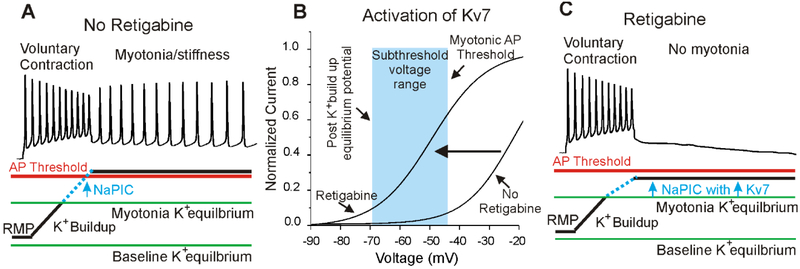Fig 6:
The mechanism underlying efficacy of retigabine against myotonia. A) Firing of action potentials during voluntary movement causes build-up of K+ in t-tubules, which depolarizes the K+ equilibrium potential. This causes depolarization of the muscle membrane potential, which activates Na+ persistent inward current (NaPIC) and depolarizes the membrane potential to above action potential threshold. The result is involuntary repetitive firing (myotonia) that is responsible for muscle stiffness. B) Shown is a plot of the voltage dependence of activation of Kv7 channels in the presence and absence of retigabine (based on the work of (Tatulian, et al., 2001)). Retigabine causes a hyperpolarized shift in the voltage dependence of opening of Kv7 channels such that the channels activate in the subthreshold voltage range (light blue) between the K+ equilibrium potential and action potential threshold during runs of myotonia. With no retigabine, the voltage dependence of activation of Kv7 channels is relatively depolarized such that the channels are not significantly activated during myotonia. C) Following treatment with retigabine, Kv7 channels activate over the same voltage range as NaPIC and prevent NaPIC from depolarizing the membrane potential to action potential threshold. RMP = resting membrane potential, AP = action potential.

